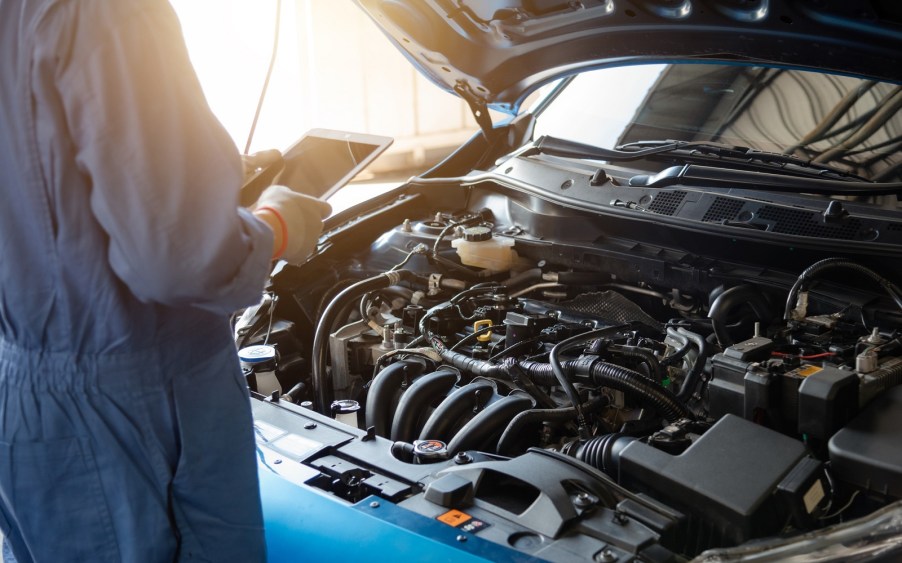
7 easy vehicle maintenance items even mechanics overlook
From early 2010 to late 2020, I wrote service at a local garage. In those years of service advising, I’ve looked at thousands of recommended vehicle maintenance checklists. Over time, I also noticed a few maintenance items that tended to go overlooked by both drivers and some mechanics. Let’s talk about six of them.
Now, if you get your oil changes at a quick lube facility, you may be offered some of these. That’s because most are pretty easy items for a “C” level, or entry-level, technician to execute. Visit a dealership or a “full-service” mechanic, though, and they might focus on more complex or urgent areas.
Fuel filter replacement
Many cars have fuel filters that are supposed to be replaced at specified maintenance intervals. Fuel filters catch unwanted debris floating in the fuel on its way from the tank to the engine. Most of these filters are “in-line.” This means you’ll find the filter plugged into the delivery fuel line that runs down the car’s frame. Unless you or the garage staff are checking the manufacturer’s recommended maintenance or a tech suspects a mechanical fuel-related failure, fuel filters tend to go ignored.
Brake caliper service
This is an item that a quick lube facility or DIYer might pass over. While many drivers are familiar with brake pad and rotor replacement, it’s important to ensure that brake jobs include a caliper service. Calipers are the “hands” that grip and clamp brake pads against the rotor, stopping the wheels. A caliper bracket holds the pads in place on each wheel. Small hydraulic cylinders and lubricated slide pins control the caliper’s clamping motions. Every time brake pads are replaced, the caliper bracket needs to be removed and cleaned. The slide pins need to be removed, cleaned, and reinstalled with fresh lubricant. This all ensures the caliper can continue to open and close with effective ease.
Tire rotations
While we all know car tires are supposed to be done regularly, this is a vehicle maintenance item that I noticed just doesn’t get done as often as it should. At the shop, we recommended tire rotations every other oil change if you went with a 3,000-mile oil change interval. That equates to rotating twice every year: one in warm weather and another time during the cold months.
Cabin air filters
Like tire rotations, cabin air filters often go ignored for several maintenance intervals. I’ve seen some pretty disgusting “situations” in dashboards, including animal invasions, that could have stopped sooner had someone checked the cabin air filter at the proper interval. Cabin air filters do what their name suggests. They filter air before it enters the passenger area. You’ll find leaves, twigs, hair, and other goodies in these filters. Most are easily accessible behind the glove box. If anything, I noticed techs often focused on larger issues or were hesitant to inspect the cabin air filter. After all, if it was clean upon inspection, the tech may feel that the task was something of a waste of time.
Wiper blades
Another seemingly obvious item! At the shop, we noticed wiper blades going season after season without replacement. Over time, the blades streak, stutter against the windshield, or even fall apart. Ideally, wiper blades are replaced at least twice a year, depending on weather conditions and the blade quality.
Clean and seal battery terminals
This is one that drivers can check themselves. In gas engines, cleaned and sealed battery terminals are essential to reliable starting. Pop open your hood. If you see fuzzies or corrosion around the battery connections, it’s time for a battery service. A mechanic uses a wire brush to scrape away the crud and then applies a terminal sealant to protect the components from fuzzing up again.
Door maintenance
Lubricating door hinges and clearing door drains are definitely skipped-over vehicle maintenance areas. Rusty door hinges will squeak, creak, or just wear out. Regarding door drains, there’s a lateral seal at the base of the door window glass. The seal wipes water off the glass as it goes down into the door panel. Over time, this seal can dry rot and warp, letting water into the door panel. Most cars have drain holes or plugs at the bottom of the door panel. These should be inspected and opened up so water doesn’t sit in the door.



